Introduction
The Polaris A-2 was an interim U.S. Submarine-Launched Ballistic Missile (SLBM) that met the Navy’s initial range requirement of 1,500 nautical miles, a milestone the preceding Polaris A-1 couldn’t reach.
The A-2 improved the Navy’s ballistic missile prowess, eclipsing the capabilities of the Air Force’s Intermediate-Range Ballistic Missiles (IRBMs). Despite its advancements, the Polaris A-2 was quickly succeeded in operational service by the more advanced Polaris A-3 missile.
| Polaris A-2 SPECIFICATIONS | |
|---|---|
| Length: | 31 ft (9.4 m) |
| Diameter: | 4 ft. 6 in (1.37 m) |
| Weight: | 32,000 Ibs (14,515 kg) |
| Speed: | Supersonic; |
| Range: | 500 (926 km) - 1,500 n.miles (2778 km) |
| Accuracy: | 12,000 ft (3,658 m) C.E.P. |
| Propulsion: | 2-stage solid propellant |
| Guidance: | Inertial |
| Warhead: | 1 x W-47 Y1 nuclear (600 KT) or 1 x W-47 Y2 nuclear (1.2 Mt) |
| Main contractor: | Lockheed Missile and Space Coorporation (now Lockheed Martin Space Systems, Missile and Space Operations, Sunnyvale, California) |
Description
Design
While the A-1 and A-2 missiles were both aimed at the same strategic mission—targeting Soviet cities as a deterrent against Communist aggression—the A-2 was what the Navy had initially promised to provide: an improved, more reliable missile. The A-2 sought to offer a similar but slightly enhanced range compared to the A-1.
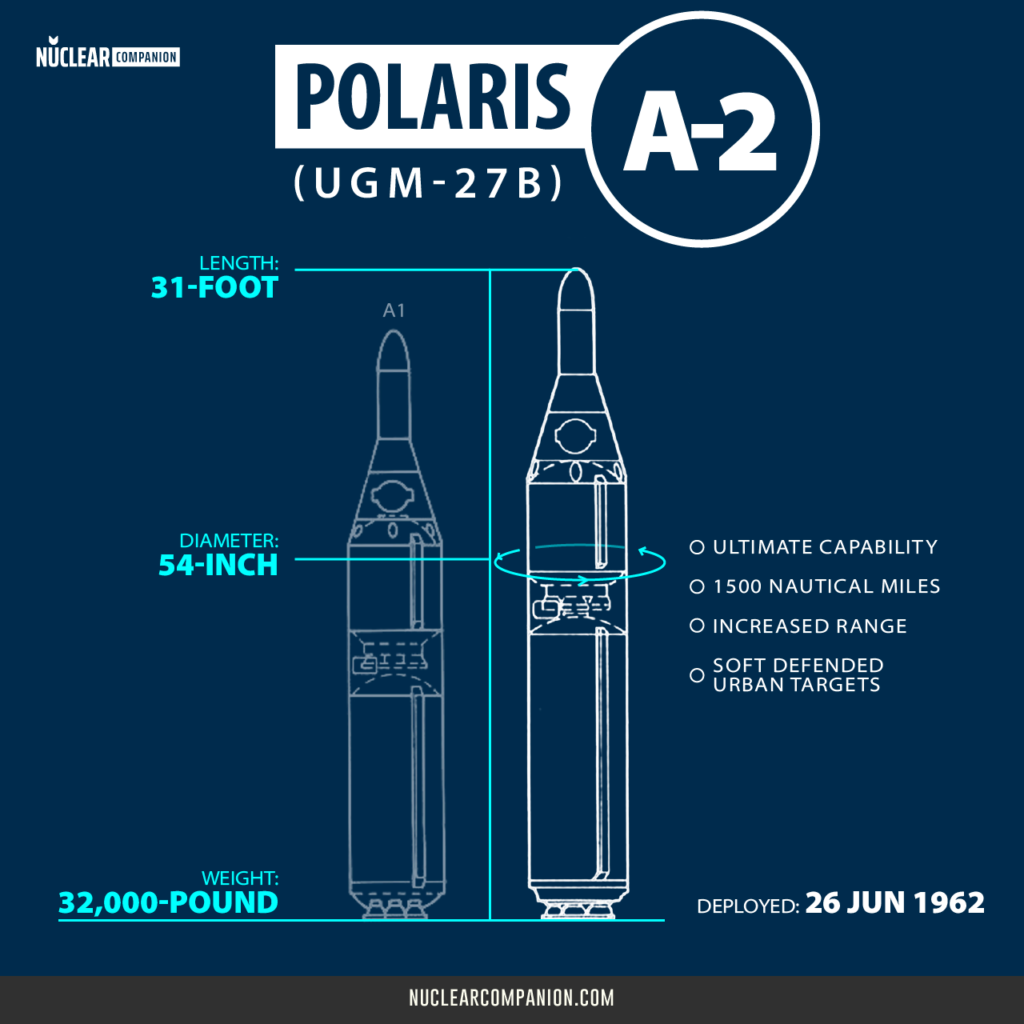
Prioritization of the second stage was strategic. Savings on inert weight in this section led to a range increment over eight times that of a similar weight reduction in the first stage. The motor casing for this stage was made of wound fiberglass instead of steel, a material with over three times the strength-to-weight ratio.
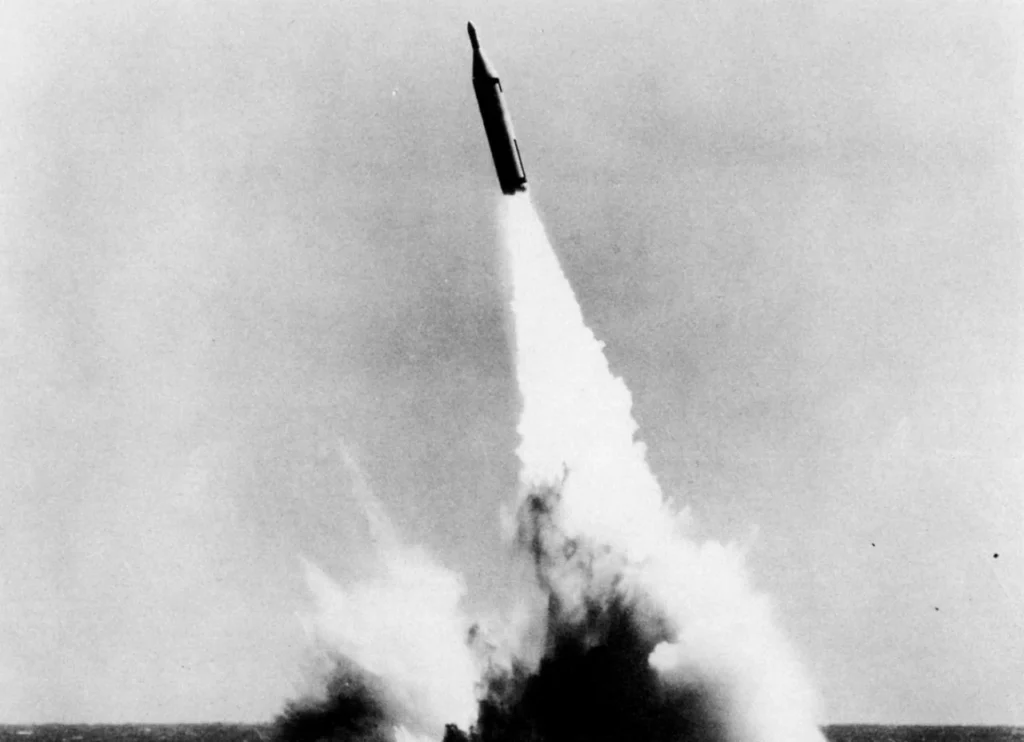
Also, the second stage was the beneficiary of increased specific impulse, further improving its performance. These focused improvements in the second stage, combined with the elongation of the first-stage motor, helped the A-2 meet its 1,500-nautical-mile range objective.
Guidance
The A-2 maintained the same guidance/control system as the A-1, with the primary difference being in having more reliable electronics.
Propulsion
The propulsion system of the Polaris A-2 featured two solid propellant stages. The Navy contracted Aerojet to build the propulsion system for the first stage and the Hercules Powder Company provided the second stage.
The first stage employed a propellant identical to that used in the preceding Polaris A-1 missile. However, there was a noteworthy modification: the length of this stage was augmented by 30 inches. This extension occupied the space that was initially reserved for the launcher’s buoyancy compensation tanks.
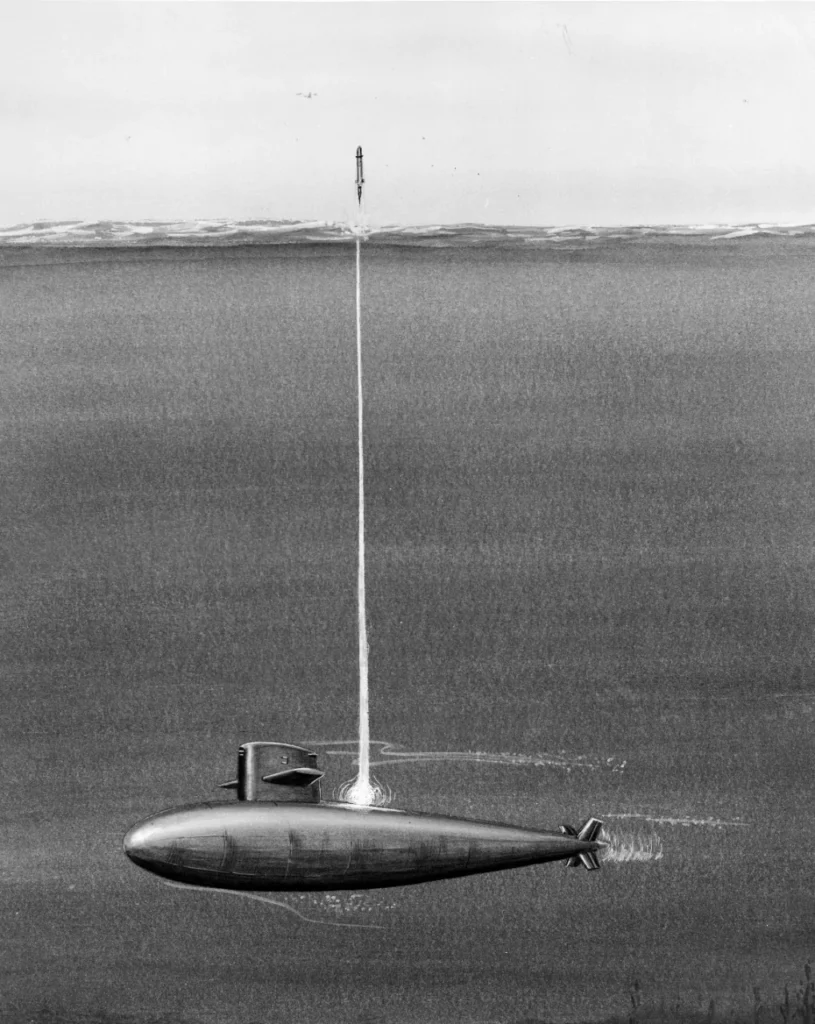
Contrasting the first stage, the second stage exhibited significant advances in both propellant and structural material. The propellant was a novel cast-in-case double-base mixture of nitrocellulose and nitroglycerin, which was then further modified by the addition of aluminum and ammonium perchlorate. This enhanced composition improved the missile’s performance capabilities.
The material used for the motor casing underwent a change as well. Traditionally made from steel, the A-2’s second stage used a glass-epoxy composite, also known as filament-wound casing. This composite material boasted more than three times the strength-to-weight ratio of steel, resulting in a substantial weight reduction for the missile.
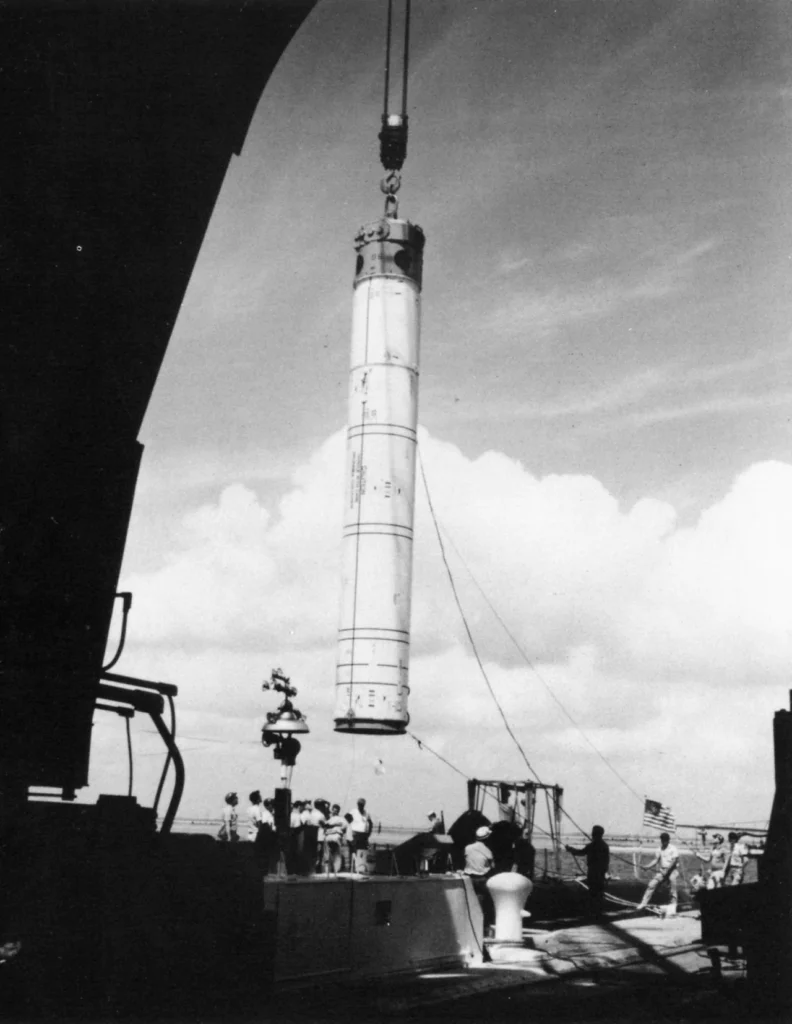
Additionally, the second stage featured an innovative thrust-vectoring system. The traditional engine jetevators were replaced with rotatable nozzles. This new arrangement allowed for thrust vector control, which enabled precise trajectory adjustments, but with a minimized loss in axial thrust.
Payload & Warheads
The Polaris A2 was initially armed with a W-47-Y1 warhead, which had a yield of half a megaton. This was later updated to a W-47-Y2, which was closer to the original 1-megaton target. The upgrade was achieved during the 1958-62 nuclear test moratorium by modifying the secondary device, which is the fusion component of a hydrogen bomb. However, this iteration of the W-47 still contained a flawed mechanical safing device. The issue was ultimately addressed in 1967.
Development
The Polaris A-2 missile underwent an accelerated development program starting in April 1958, with the aim of achieving a 1,500-nautical-mile range.
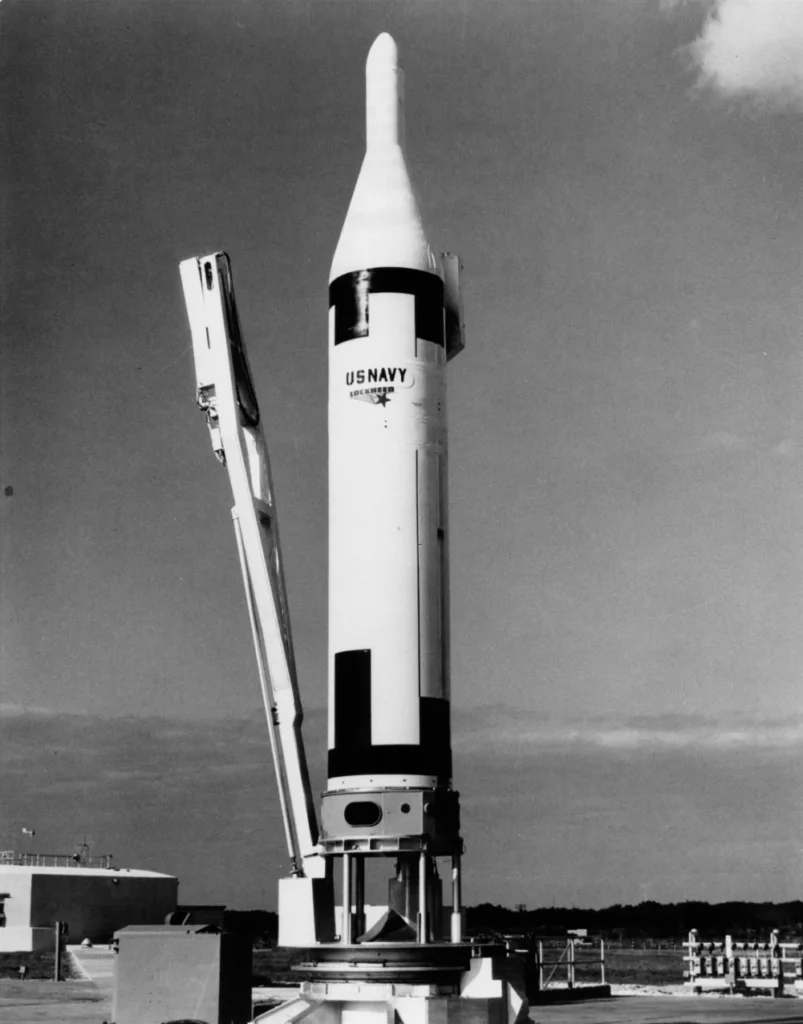
Development flight tests for the A-2 commenced in November 1960 and ran concurrently with the submarine launches of its predecessor, the Polaris A-1. These tests produced mixed results: out of 28 flight tests, 19 were successes, six were partial successes, and three were outright failures. A series of A2X missiles were modified in late 1961 to test subsystems designed for the subsequent A-3 model.
The first submerged launch of an A-2 was successfully conducted on October 23, 1961, from the USS Ethan Allen off Cape Canaveral.
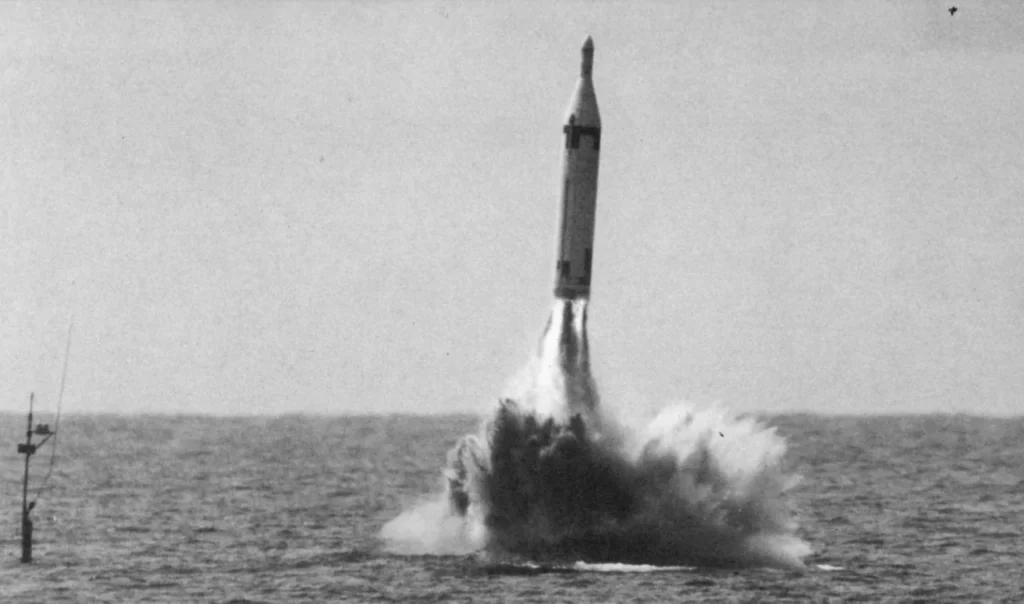
The first A-2 missile achieved a distance of 1,600 miles during its maiden flight on November 10, 1960.
On May 6, 1962, the USS Ethan Allen carried out a landmark full-system test, launching an A-2 missile equipped with a nuclear warhead. Designated Operation Frigate Bird, the missile was launched from a location 1,500 nautical miles east-northeast of Christmas Island and detonated in an airburst after traveling 1,020 nautical miles toward the island. The yield of the detonation ranged between 200 and 1,000 kilotons of TNT equivalent. This was the only full-system test of a U.S. strategic missile, confirming the Polaris system’s effectiveness from launch through detonation.
Operative Service
The Polaris A-2 missile began its operational journey on 26 June 1962. On that day, the USS Ethan Allen set out from Charleston, South Carolina, marking the missile’s initial patrol.
During its service, this missile would be deployed on 13 submarines. The A-2 became operational in the five submarines that make up the Ethan Allen class FBM and the first eight submarines of the Lafayette class. The last deployed submarine with the missile was the USS John Adam on 3 November 1964.
| Submarine class | Built | IOC | Missiles |
|---|---|---|---|
| Ethan Allen | 5 | 1961-1963 | 16 |
| Lafayette | 8 | 1963-1964 | 16 |
In 1963, due to the missile’s improved range, these submarines extended their patrols into the Mediterranean. This enabled to target the Soviet Union from this body of water.
Submerged launches were standard, but two surface launches occurred. These were from the Henry Clay (SSBN 625) on 20 April 1964 and the Nathaniel Green (SSBN 636) on 15 March 1965. These were the only A-2 and A-3 missiles respectively, to be fired in this manner.
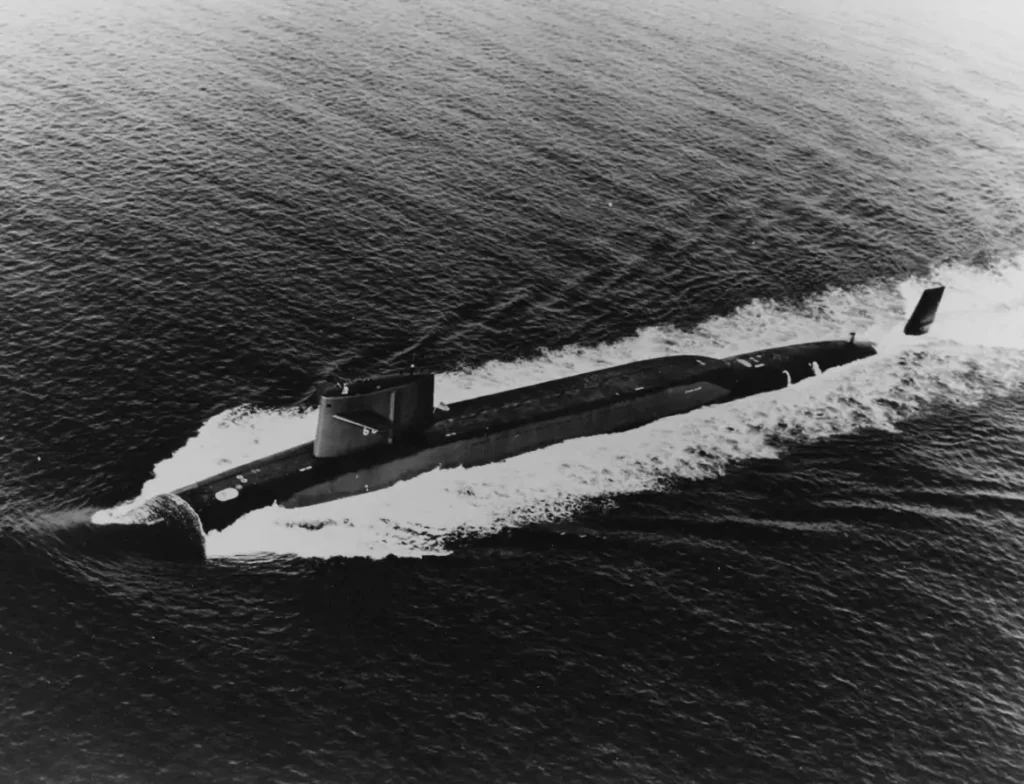
Around the mid-1970s, the Poseidon missile system became available, leading to an upgrade in the Lafayette class FBMs. The first patrol with this new missile commenced on 29 August 1974. Additionally, this period saw the Ethan Allen class being rearmed with the A-3 missile, indicating a universal transition away from the A-2.
Finally, the A-2’s service chapter closed on 9 June 1974 when the USS John C. Marshall returned to homeport from the last Polaris A-2 patrol.
Further reading
- United States Submarine-Launched Ballistic Missiles (SLBM)
- Polaris A-1 (UGM-27A)
- Polaris A-3 (UGM-27C)
- Polaris Missile Deployment (1960-1982)
Bibliography
- Nuclear Weapons of the United States: An Illustrated History by James N. Gibson, 1997
- The U.S. Nuclear Arsenal: A History of Weapons and Delivery Systems since 1945 by Norman Polmar Robert & S. Norris, 2009
- Jane’s Strategic Weapons Systems, Issue 38, Jane’s Information Group, UK, 2003
- The Fleet Ballistic Missile System: Polaris to Trident by R. A. Fuhrman, 1978
- From Polaris to Trident: The Development of US Fleet Ballistic Missile Technology by Graham Spinardi, 2008